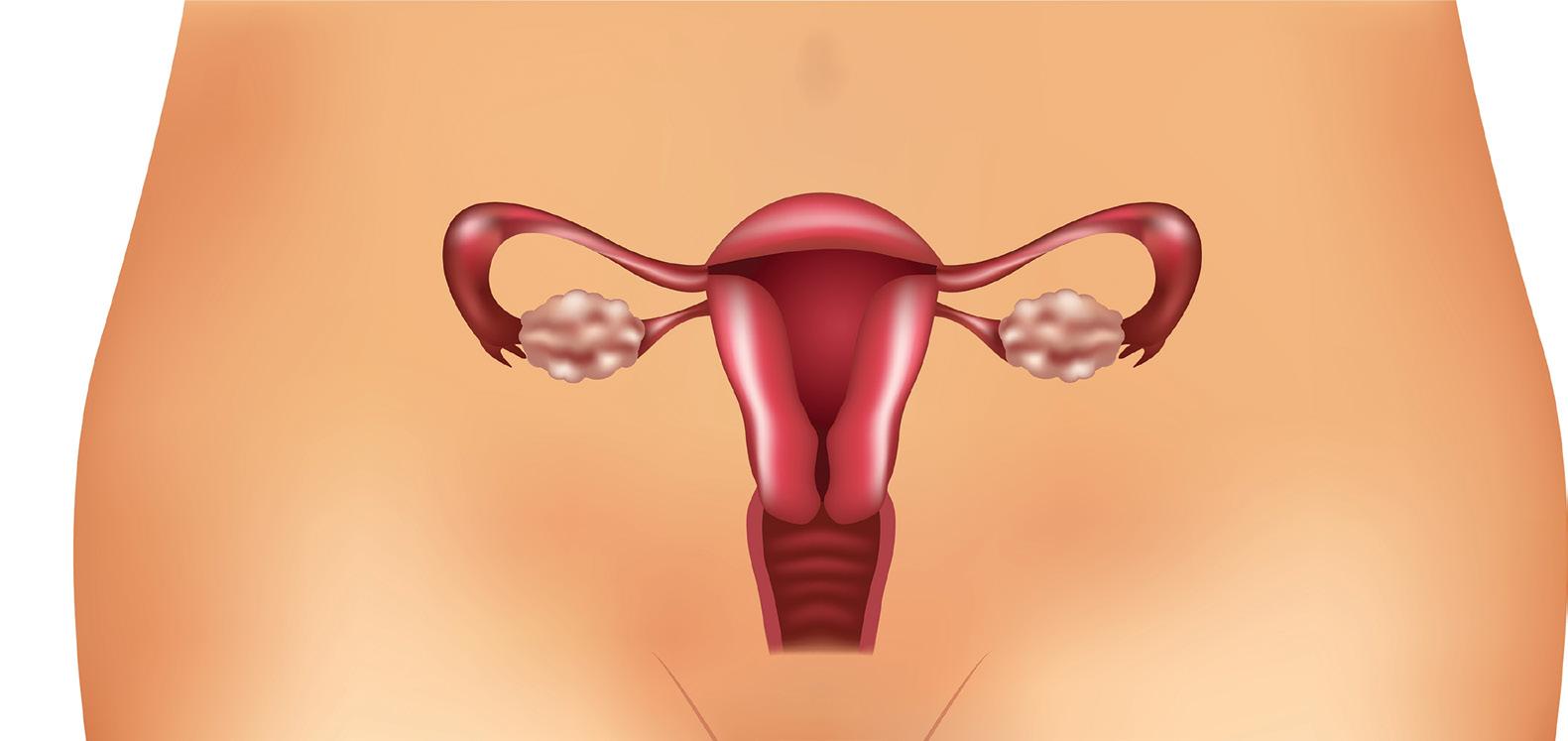
22 minute read
global briefs
Ark Park
World’s Largest Wildlife Highway Crossing Opens in San Antonio Critters React to Warming Temperatures in the Rockies
Advertisement
A 13-year study at the University of Colorado at The new Boulder published in the photo courtesy of phil hardberger park conservancy Robert L.B. Tobin Land Bridge connects people with nature in the heart of San Antonio across a sixlane highway at Phil Hardberger Park. Private donations and a five-year bond program journal Ecology reveals that the popular goldenmantled ground squirrel and 46 other species of rodents and shrews in Colorado are climbing uphill to escape warming temperatures in the state. The report states that, on average, the ranges of the animals have shifted more than 400 feet in elevation since the 1980s. Montane mammals, or those already living at higher elevations like the ground squirrel, have moved up 1,100 feet on average. It‘s a significant change that could rob them of their environmental niche. The same species may be harbingers of larger and more urgent changes in the Rocky Mountains. sheilaf2002/AdobeStock.com approved by voters helped fund the $23 million bridge, the Colorado has warmed by nearly 3.5 degrees Fahrenlargest wildlife crossing of its kind in the U.S. heit since the 1980s because of human-caused climate
Wildlife and vehicle collisions are a big problem across change. As the state continues to heat up, scientists say the country, increasing by 50 percent in 15 years, with an that ponderosa pine forests and other mountain ecoestimated 1 to 2 million large animals killed by motor- systems will have to move higher to find cooler weather. ists every year, according to National Geographic sources. Beginning in 2008, the team visited multiple sites in In the U.S., 21 threatened and endangered species face Colorado’s Front Range and San Juan mountains to collect extinction partly because of traffic accidents. Wildlife records of the current ranges of 47 species of rodents and crossings are seen as an effective solution to the problem, shrews. They compared their findings with approximately with fatality reductions of up to 95 percent, depending 4,500 historic records from museum collections dating on the location. The San Antonio bridge is notable for its back to the 1880s and included animal specimens stored at size—150 feet wide and 150 feet long—and that it accom- the university museum, which houses nearly 12,000 mammodates people, too. Animals in the 330-acre park that mals from Colorado. benefit from the bridge include ringtails, squirrels, coyotes, lizards, raccoons and deer. They are using it as intended, and it also Ah-Choo! serves as a habitat for native plants. Climate Change Makes Pollen Season Worse for Allergy Sufferers


budimir jevtic/AdobeStock.com A new study by the University of Utah published in the journal PNAS found that pollen seasons have been getting longer and more intense in North America over the last 30 years, aggravating asthma and weakening defenses against respiratory viruses, resulting in more emergency room visits that disrupt lives. Researchers comparing pollen metrics between 1990 and 2018 from 60 monitoring stations indicate that seasons are starting up to 20 days earlier and lasting up to eight days longer, affecting millions of allergy sufferers. The study looked at variable factors such as temperature, rainfall, frost days and carbon dioxide concentrations, and found that an increase in mean annual temperatures was the strongest driver. According to the U.S. Centers for Disease Control and Prevention, about 19 million adults have been diagnosed with hay fever, an allergic reaction to pollen, a fine powder from plants that can come into contact with the eyes, nose, mouth and throat.
anna shvets/Pexels.com
INTEGRATIVE WOMEN’S WELLNESS
Five Top Health Concerns and What to Do
by Ronica O’Hara
Anyone walking into a U.S. hospital today will notice something that was inconceivable 50 years ago—one in three practicing physicians is a woman, and among physicians under age 35, it’s three in five. That compares to one in 14 in 1970. For women needing health care, that fact can change everything. “Research says that female physicians provide better care to female patients than male physicians do,” says Harvard Medical School Associate Professor Alice Domar, Ph.D., a pioneer in women’s mind-body medicine. “They are more likely to listen carefully and take complaints seriously.”
That’s just one factor in how health care is improving for women. Only three decades ago, women were simply considered “small men” in medical research and rarely included as subjects in clinical studies. Today, after a 1993 federal mandate ensured their inclusion, it’s been well established that women metabolize drugs differently than men, respond to health threats with a more robust immune system and are more likely to experience side effects. These findings have helped spur major changes for women in standards, dosages, medications and procedures—resulting in fewer cancer deaths, better treatment of autoimmune disorders and more nuanced cardiac care strategies. Although much has improved about women’s health, much more remains to be done.
Cancer
About one in three women is diagnosed with cancer in the course of a lifetime, and they have better survival rates than men, of which one in two receives that diagnosis. Between 2001 and 2017, the overall cancer death rate for women declined by 1.4 percent each year as diagnoses and treatments became more refined and targeted. The number one cancer killer for women is
lung cancer, although 19 percent diagnosed have never smoked. The next most deadly are cancers of the breast, colon/rectum, pancreas and ovaries.
Breast cancer deaths have dropped by 40 percent since 1989, thanks to greater awareness, early detection and better treatments. “Women learned from the AIDS crisis that making noise gets results,” says Domar. “Look at how far breast cancer research and treatment has come in the past 10 to 20 years, how powerful Breast Cancer Awareness Month is, and that everyone recognizes that pink ribbon.” Common symptoms: Bowel changes, lingering sores, fatigue, lumps, unusual discharge, difficulty digesting or swallowing, nagging cough or hoarseness, belly or back pain. New research: An international research team has identified a direct molecular link between meat and dairy diets and the development of antibodies in the blood that increases the chances of developing cancer. Medical advances: Painful, invasive biopsies may become a thing of the past. Mayo Clinic researchers have developed a simple blood test that detects more than 50 types of cancer, as well as their location within the body, with a high degree of accuracy, and the City of Hope Cancer Center, in Los Angeles, has developed a urine test that analyzes cell-free fragments of DNA to detect cancer. Preventive strategies: Vitamin D supplementation lowers the risk of mortality across all cancers, German researchers found, estimating that if all Germans older than 50 took such supplements, up to 30,000 cancer deaths per year might be avoided. A 10-year study found that people between 55 and 74 that took a low-dose aspirin at least three times each week lowered their risk of all types of cancer by 15 percent and overall mortality by 19 percent.
Heart Disease
One in three American women die from heart disease, more than all cancers combined. “Unfortunately, awareness that heart disease can and does happen to women remains low, and this results in delay of care,” says cardiologist Nicole Harkin of Whole Heart Cardiology, in San Francisco. “Women tend to seek medical care later in the course of their heart attack and with more risk factors, resulting in poorer outcomes, and they are more likely than men to die of their first heart attack.”
Women have different symptoms of heart disease than men, are often misdiagnosed and have a 20 percent greater risk of dying within five years of a heart attack. Pregnant women that develop hypertension are two to five times more likely to later develop cardiovascular disease. Common symptoms: Heart pressure, fatigue, breathlessness and pain between the shoulder blades. New research: Eating more than seven servings per day of refined grains like croissants and white bread increased the risk of heart disease by 33 percent and stroke by 47 percent, concluded a study
lionidast akaoishik ama/Pexels.com
allyson weislogel/Unsplash.com

in The British Medical Journal. In a Stanford study, participants that ate plant-based meat for eight weeks had improved markers of heart health, lower LDL levels and lost two pounds compared to those eating meat. Medical advance: To successfully fix a floppy mitral valve that’s hampering blood flow in the heart, doctors can guide a catheter up a patient’s leg vein and staple the troubled parts of the valve with a tiny clip, a safer and less invasive procedure than openheart surgery. Preventive strategies: Eating nuts several times a week lowers by 30 to 50 percent the risk of heart attacks, sudden cardiac death and cardiovascular disease, four large cohort studies have shown. Older women with high fitness levels have one quarter the risk of dying from heart disease as women that are out of shape, report Spanish researchers.
Autoimmune Diseases
The prevalence of autoimmune diseases has grown by one half in two decades, even as medications and targeted therapies have kept more patients active and out of wheelchairs. “Where it used to be the norm for many physicians to consider women with some autoimmune illnesses to be neurotic, that approach is now being recognized as being abusive and unacceptable. This is a critical step towards recovery,” says chronic fatigue expert Jacob Teitelbaum, M.D., author of From Fatigued to Fantastic!
About 80 percent of the 23 million Americans that suffer from debilitating autoimmune diseases are women, and those conditions tend to develop during childbearing years. The eighth-leading cause of death among women, these illnesses shorten lifespan by an average of eight years. The 80-plus diseases, including fibromyalgia, lupus, celiac disease, Type 1 diabetes, psoriasis and rheumatoid arthritis, are linked to genetics, environmental triggers, some medications, obesity, injuries and stress. Common symptoms: These vary widely, but may include achy muscles, fatigue, recurring low-grade fever, joint pain and swelling, skin problems, abdominal pain and swelling, hair loss, swollen glands and tingling in hands and feet. New research: Eating significantly fewer foods containing the amino acid methionine, found at high levels in meat, fish, dairy and eggs, could slow the onset and progression of autoimmune disorders such as multiple sclerosis in high-risk individuals, reports a study in Cell Metabolism. Medical advance: Evidence is mounting that low doses of naltrexone, a substance-abuse treatment drug, can treat conditions like lupus, Crohn’s disease and rheumatoid arthritis by normalizing the immune system and relieving pain with few side effects. “It costs only about 70 cents a day, is made by compounding pharmacists and is remarkably beneficial for a host of autoimmune conditions,” says Teitelbaum. Preventive strategy: To fight inflammation, take a daily turmeric or curcumin supplement that includes piperine (black pepper) for better absorption. A University of Houston meta-study in Nutrients found that curcumin supplements improved symptoms in 14 osteoarthritis, two ulcerative colitis and eight Type 2 diabetes studies.
Hormonal Imbalances
The past 20 years has seen significant improvements in the studies and treatments of female hormonal issues. “There are now treatment options that allow women to transition into menopause, options for prevention of osteoporosis and momentous changes in fertility,” says Stephanie Seitz, a naturopathic family physician in Scottsdale, Arizona. At the same time, she adds, “I have seen environmental toxins rising in my female population. I see young girls coming in with polycystic ovary syndrome, early menarche and painful menstrual cramping; women having trouble getting pregnant for unknown reasons; the rise of fibroids, premature ovarian insufficiency and endometriosis.”
Hormones are the body’s chemical messengers, regulating processes ranging from hunger to blood pressure to mood and playing a key role in reproduction. They have come under assault from endocrine disrupters, thousands of largely unregulated per- and polyfluoroalkyl substances, abbreviated PFAS. These “forever chemicals” are found in everything from plastics to cushions to canned foods, and are in the blood of 98 percent of Americans. Studies have linked them to girls experiencing puberty one year earlier than 40 years ago; to rising cases of infertility, miscarriages and low birth weight; to menopause occurring two to four years earlier; and to obesity, polycystic ovarian syndrome, endometriosis and breast cancer. Common symptoms: Because hormones regulate all of the body’s processes, symptoms of imbalance run the gamut and may
New research: Early menstruation increases the likelihood of hot flashes and night sweats decades later at menopause, according to a University of Queensland study. Eating five teaspoons of extra-virgin olive oil daily reduced women’s moderate to severe menstrual cramps by 83 percent in two months, Iranian researchers found. Medical advance: A major study of 9,000 postmenopausal women with hormone-sensitive breast cancer showed 94 percent that received hormonal therapy, but not chemotherapy, did not have recurrences.
Preventive strategies: To avoid toxic chemicals, buy organics; replace plastic kitchen containers with glass; replace Teflon pans with ceramic or cast-iron; use chemical-free cosmetics and shampoos; nix air fresheners and chemical cleaners; and check out food and care products at the Environmental Working Group (ewg. org). To help detox the body, consider working with a naturopathic doctor to develop a program that may include cleansing foods, herbs, saunas, elimination diets and chelators such as activated charcoal and algae.
Depression

Women are twice as likely as men to develop depression, with one in four having a major episode at some point in life, yet fewer than half seek treatment. “Many women are too busy caring for others and feel guilty about their depression, fearing it could get in the way of their caregiving goals,” says New York psychoanalyst Claudia Luiz. “Many have the fantasy that if they open that door and allow themselves to focus on their feelings, they won’t be able to keep going.”
Depression occurs most frequently in women ages 25 to 44, and one in five teenage girls reports having had a major depressive episode, a number that has exploded due to social media use. Psychotherapy is effective for 62 percent of adults with depression, antidepressants work for 54 percent and combining the two is helpful for 72 percent. Common symptoms: Sadness, anxiety, flat feeling, loss of motivation or feelings of pleasure, change of eating or sleeping patterns, low energy, difficulty concentrating or headaches. New research: Sleeping irregular hours, doing night shifts and working for more than nine hours a day have been shown to put women at higher risk of depression, while eating more dietary fiber in produce, grains and legumes significantly lowers this risk. Medical advances: For the estimated one in four people with depression that doesn’t respond to medication or therapy, emerging approaches offer fresh hope. Low doses of the anesthetic drug ketamine lifted the depression of 70 percent of hard-to-treat subjects by targeting specific serotonin receptors, Swedish researchers report. Transcranial magnetic stimulation, which uses magnetic pulses to stimulate parts of the prefrontal cortex, lifts symptoms for 50 to 60 percent of subjects, studies show. Preventive strategies: Eating at least two servings a week of wild-caught, oily fish or a daily 1,000-to-2,000-milligram fish oil supplement with a 60-to-40 EPA to DHA ratio has been shown to be effective for symptoms of depression, bipolar disorder, attention deficit hyperactivity disorder and postpartum depression. Taking a brisk daily walk in nature with a friend or dog lowers four factors linked to depression: a “nature deficit”, physical inactivity, low vitamin-D levels and isolation.
Natural health writer Ronica O’Hara can be reached at OHaraRonica@gmail.com.

Hormones, Diet and Polycystic Ovarian Syndrome
by Dr. Katelyn Lieb
Polycystic ovarian syndrome (PCOS) affects almost one in every 10 women of reproductive age. Considered a gynecological condition, PCOS actually has as much, if not more, of an impact on metabolism and blood sugar as it does on a woman’s reproductive system. Most women diagnosed with PCOS experience acne, male-pattern hair growth and trouble losing weight. They may also have irregular periods or cysts on their ovaries. These irregular periods and lack of ovulation can lead to possible infertility. Women diagnosed with this condition often feel as if they have limited options when it comes to managing their symptoms. Symptoms include insulin resistance, or the inability to properly respond to the body’s insulin signals. This is not only a common symptom of PCOS but may be a major driver of the condition itself. This can lead to elevated blood sugar levels mimicking the same symptoms we see with type 2 diabetes: fatigue, weight gain and food cravings. Elevated blood sugar in women with PCOS actually impacts the way ovaries produce hormones; this can lead to the lack of ovulation. It can even cause the ovaries to begin producing excessive amounts of testosterone, which triggers other common symptoms associated with PCOS like acne and unwanted malepattern hair growth, such as on the chin. Treating PCOS effectively needs to focus on blood sugar balance and hormonal regulation. Most important, though, is investigating the possible underlying cause, which is often related to gut health and stress. Being mindful of dietary choices can help women with PCOS reduce insulin resistance and, in turn, relieve symptoms. Make it a point to eat meals that are balanced with quality protein, healthy fats and complex carbohydrates from vegetables. This nutritional balance prevents blood sugar spikes and makes it easier for the body to use nutrients without high levels of insulin. Quality proteins such as lean chicken, grass-fed beef, wild-caught fish, beans, lentils or organic soy should be included in every meal. Green leafy vegetables or cruciferous vegetables support hormone regulation with their fiber and antioxidant content. Carrots, sweet potatoes and starchy vegetables should be included, but not in excessive amounts that can trigger a large insulin response. Reducing packaged and processed food also helps to prevent excess inflammation and a high insulin response. When meals are balanced, hormone production and healthy insulin levels are supported. Women with PCOS should evaluate any sensitivities they may have to foods they eat frequently, which may be causing inflammation in the body. Inflammation is generally higher in women with PCOS already, so certain foods may add fuel to
the fire. Increased inflammation may lead to more insulin resistance, trouble losing weight and worsening acne. Dairy is a common food sensitivity and, in general, is not well tolerated by women with PCOS. Dairy acts on specific receptors that may influence testosterone levels in women with PCOS. This increased testosterone leads to the acne and male-pattern hair growth that become worrisome to women who experience it, often without a proper diagnosis of why this is happening. Dairy consumption can also contribute to overproduction of luteinizing hormone (LH). LH normally elevates short-term midway through a woman’s menstrual cycle to initiate ovulation. In women with PCOS, LH can be chronically high throughout the entire cycle, preventing ovulation and, therefore, leading to problems with conception. For women who want to understand how diet impacts their hormones, reducing or eliminating dairy products is a good place to start. In addition to understanding our body’s food sensitivities and eliminating the culprits, adding foods that reduce inflammation and support hormone levels is an excellent way to reduce PCOS symptoms. Organic berries such as blueberries, blackberries, strawberries, cherries or raspberries are low in sugar and high in fiber, which makes them an excellent choice for women with PCOS. Studies have shown that berries have the power to help reduce inflammation and decrease insulin resistance. Teas such as nettle leaf, spearmint and green tea are other helpful choices for women with PCOS. These teas work in two ways: they reduce inflammation and reduce testosterone levels. Adding these dietary choices to complement a dairy-free, protein, fat and carbohydratebalanced nutrition plan will support proper hormone function in women with PCOS while addressing other contributing factors like insulin resistance. Women with PCOS face a wide range of symptoms. Finding foods that support balanced hormones is one way to help manage and reduce symptoms that are most persistent when trying to maintain fertility, manage weight and minimize acne to help us feel our very best.
Dr. Katelyn Lieb is a naturopathic physician who specializes in women’s health, hormones and thyroid conditions at Fernwood Holistic Health in Westbrook, CT. Connect at 860-661-5824 or Info@FernwoodHolisticHealth.com, or follow on Instagram @drkatelynlieb.
an unforgettable, experiential evening of discovery, freedom and power!
LivingWithoutLimits.com
May my soul bloom in love for all existence.
~Rudolf Steiner
Coming Next Month
JUNE Integrative Approaches to Men’s Health

Plus: Treating Depression Naturally Travel for the Planet Tips for Eating Vegan on Vacation

Thermogram Program Provides
In-Depth Women’s Health Check
by Ariana Rawls Fine
As we navigate a world with increased environmental toxic overload for many of us, we search for ways to decrease our exposures. As women, we are encouraged to go for annual female-focused checkups that may include mammograms—and, for some of us with denser breasts, ultrasounds as well—Pap smears and other types of hormonal-related tests. These tests can detect issues that may need to be addressed immediately, but they do come with exposure-related concerns for some with repeated annual tests. Early detection enables us to address potential trouble areas sooner than later before they become a serious issue, explained Rachel Mazzarelli, MS, CCT, owner of Whole Health Thermography LLC (WholeHealthThermography.com), which serves Fairfield and New Haven Counties in Connecticut, and Westchester County in New York. One of the benefits of digital infrared thermal imaging (DITI) is a detection of body changes and risk markers before they might move out of the “normal” level ranges on the regular annual tests. DITI, or thermography as it is referred to, is non-invasive, non-contact, painless, FDA-cleared technology with no radiation involved. DITI has been recognized as a viable diagnostic tool for over 30 years by the AMA Council on Scientific Affairs, ACA Council on Diagnostic Imaging, Congress of Neuro-Surgeons, and American Academy of Physical Medicine and Rehabilitation. While an increasing number of women are having breast thermograms for much earlier detection of potential problem areas and for readings that around 85% accurate, a new thermography program addresses broader women’s health. The Advanced Women’s Health Check (WHC) provides a focused holistic view of overall health status and future risk levels, indicated the American College of Clinical Thermology. It is an opportunity to detect changes earlier than possible through self or doctor examination, and diagnostic testing alone. This quick, 30-minute test starts with a detailed medical history being taken before partially disrobing for the non-contact scanning is performed. WHC can be a valuable procedure for alerting a person’s healthcare practitioner to changes
that can indicate developing pathology and dysfunction. The results are also weighted Head-neck image for analysis and specific to female symptoms related to thyroid dysfunction, estrogen Chest image dominance or genitourinary issues. The WHC thermogram report is generated from Mid-body image a 71-point questionnaire that combines symptoms and history across breast, obstetrics/ gynecology, thyroid, endocrine, visceral and autonomic systems. DITI looks for findings that may indicate autoimmune, endocrine/adrenal system, vascular, lymphatic and breast health dysfunctions, such as hormonal dysfunction, polycystic syndrome, and inflammatory pelvic disease and endometriosis. A colored slider moving from green to red indicates associated risk levels. A green Normal reading does not rule out subclinical or non-active pathology but is an indication of good functional health and low risk for existing or developing pathology. The orange Low Risk level justifies clinical evaluation or correlation with low-risk physiological dysfunction, which should be assessed and/or monitored by a healthcare professional in order to achieve and maintain optimum wellness. The red Some Risk level indicates risk for existing or developing pathology, justifying additional clinical testing or intervention to diagnose or rule out clinically significant physiological dysfunction. The WHC includes the additional findings relating to physiological changes in the breasts and is an important piece in the breast screening puzzle. Breast health is integral to our wholistic wellness as well as being an early indicator of developing pathology. As for digestive issues, abdominal findings include colon inflammation that can indicate IBS, leaky gut, diverticulitis and other risk factors that justify colonoscopy or preventative treatment. “My reasons for beginning to get regular thermograms are my family history of breast cancer. After a couple of pictures and a short wait time to get the report, I was delighted to learn that my breasts were looking all blue and green (healthy), which was a big relief. I was surprised to see that I had perioral hyperthermia, which was noted as consistent with a lowgrade dental infection. I had an annual appointment coming up with my dentist, so she checked it out. It was a simple case of not flossing enough. I was so impressed that the thermogram picked up on such a relatively minor situation. There were no symptoms,” said Laura (last name withheld for privacy) from New York about the thermogram picking up other imbalances in her body. For many of us suffering from autoimmune conditions, a loss of temperature gradients can indicate autonomic disease or dysfunction, such as early-stage diabetic changes. Inflammatory vascular findings can provide a warning before any symptoms develop as arteries become inflamed before occlusion becomes clinically significant. The head and neck views that are graded in WHC include sinuses, arteries, dental, thyroid, lymphatic, and autonomic as well as any indications of inflammation or infection that can affect the immune system. “Because of the women’s health check report, I was able to hone in with my naturopath on what further lab tests were needed or unnecessary to investigate symptoms I was experiencing,” said Daniela (name changed for privacy). “As an example, suspected intestinal issues did not ‘light up’ in the thermogram reading, which was contrary to what I thought was happening. Instead, viral and environmental toxin overload in other areas seemed to come up. My result definitely showed more T2/T3 issues associated with a chronically activated immune system, which led my naturopath to test more for food allergies and sensitivities, hormonal imbalances, heavy metal toxicity, lowgrade chronic infection and systemic illness. In addition, the test pointed out a low-grade level of dysfunction throughout my back, which indicated to me that I needed to implement a more regular plan of treatment with my chiropractor as well.” The test and report are designed to help patients take control of their current and future health. The report is also designed to help motivate patients to incorporate lifestyle changes, holistic treatment or even medical intervention. Annual studies are recommended to help monitor risk levels and provide early indicators of any issue that justifies intervention. Patients can bring the easy-to-read report to any practitioners—such as naturopaths, osteopaths, biological dentists, holistic physical therapist, chiropractor, energy practitioners and others—to better inform treatment plans with health support providers.
Ariana Rawls Fine is a holistic writer and editor who lives in Stratford with her family.


SKILLED MASSAGE ORGANIC FACIALS COMMUNITY ACUPUNCTURE PHARMACEUTICAL-GRADE CBD CBD MASSAGE ElmCityWellness.com





